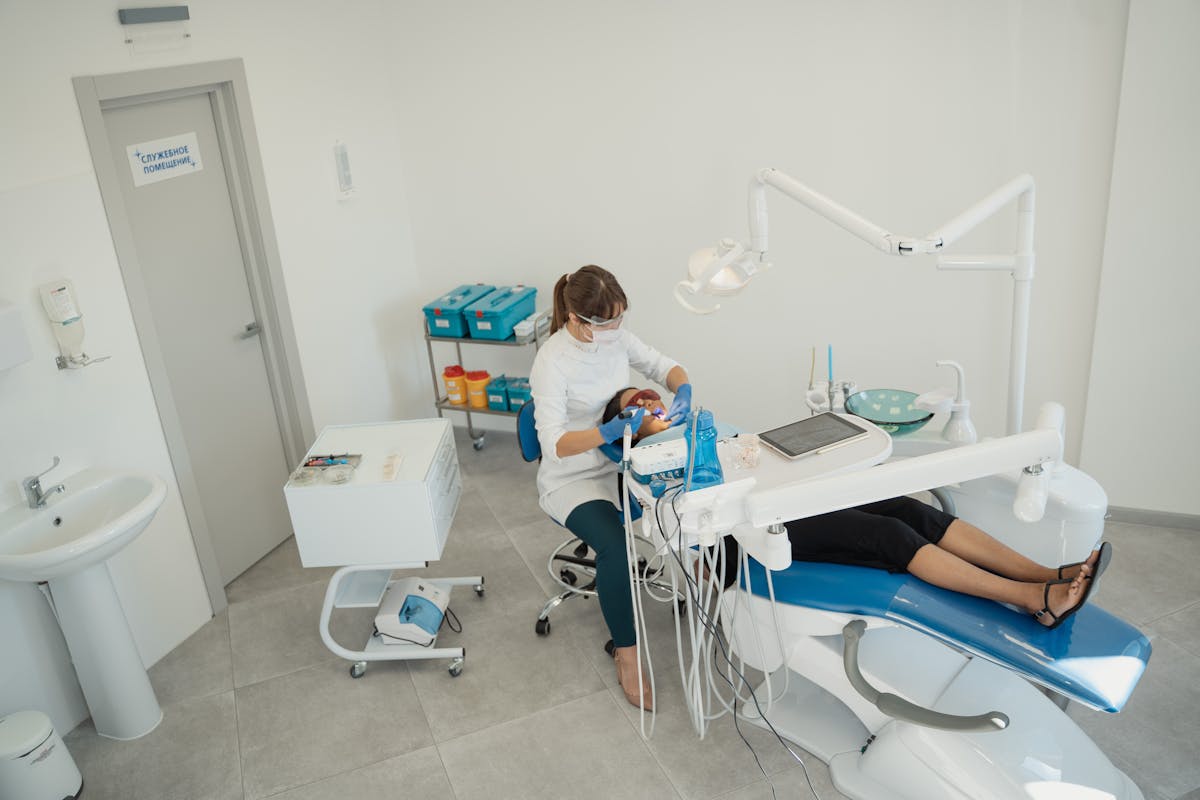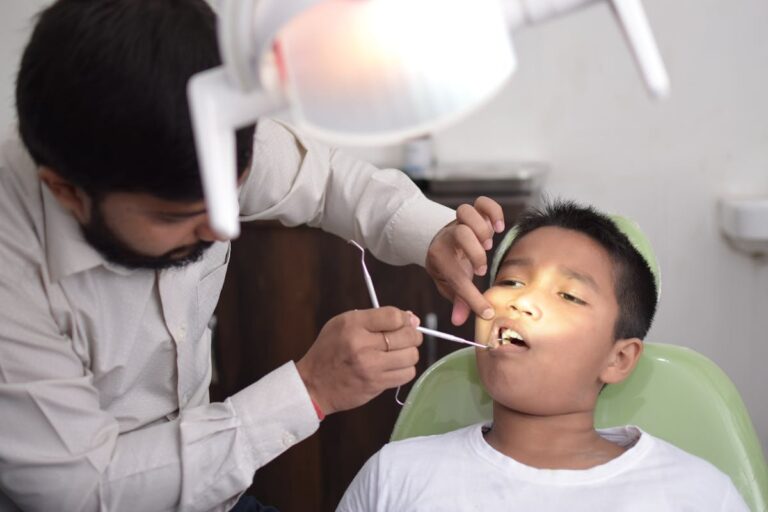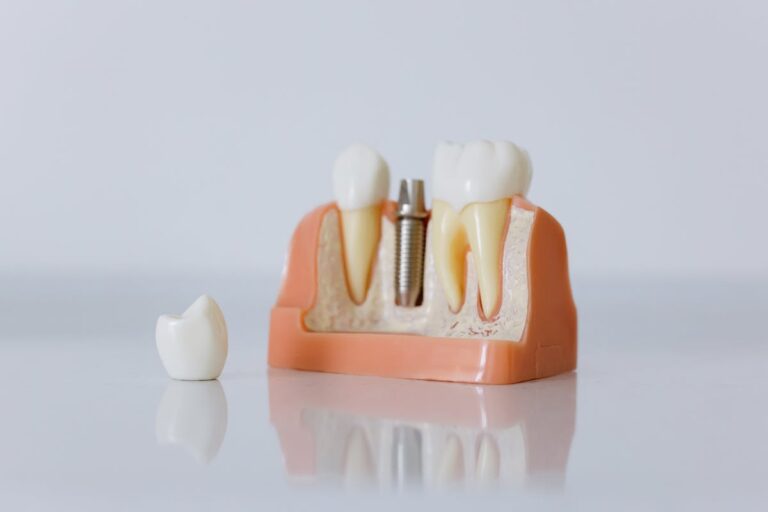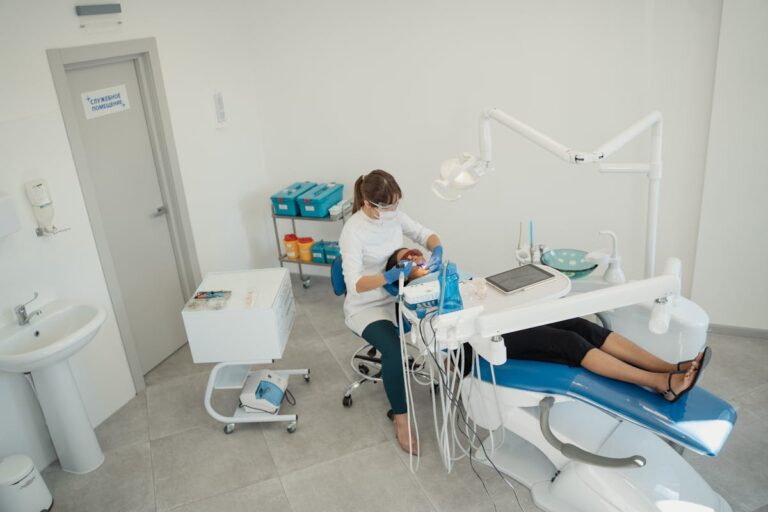Restorative dentistry plays an essential role in maintaining oral health, yet recognizing when it’s necessary can be challenging. Albertson dentists emphasize early detection of issues such as tooth sensitivity and gum inflammation. Addressing these signs promptly can prevent more severe complications. This discussion explores the indicators that suggest a need for restorative care and the available solutions to restore function and aesthetics. Discover how timely interventions can enhance dental health and satisfaction.
Understanding Restorative Dentistry
Restorative dentistry encompasses a range of procedures designed to repair or replace damaged or missing teeth, thereby restoring function and aesthetics. This branch of dentistry utilizes advanced restorative techniques to address issues such as decay, fractures, or gaps. Techniques include fillings, crowns, bridges, and implants, each selected based on individual patient needs and the extent of dental damage. Dental materials play a critical role in these procedures, with options ranging from amalgam and composite resins for fillings to porcelain and zirconia for crowns and bridges. These materials are chosen for their durability, aesthetic value, and compatibility with natural teeth. By integrating modern restorative techniques with high-quality dental materials, restorative dentistry aims to achieve ideal oral health and enhanced dental appearance.
Recognizing the Signs You Need Restorative Care
While understanding the techniques and materials used in restorative dentistry is fundamental, identifying the need for such care is equally important. Individuals must be vigilant in recognizing symptoms indicative of dental deterioration. Tooth sensitivity often signifies enamel erosion or dentin exposure, necessitating professional evaluation. This discomfort, particularly when consuming hot or cold substances, should prompt immediate attention. Additionally, gum inflammation, characterized by redness, swelling, or bleeding during brushing, serves as a critical indicator of underlying periodontal issues. This condition can escalate to significant oral health problems if left untreated. Detecting these signs early facilitates timely intervention, potentially preventing more complex procedures. Albertson dentists emphasize the importance of routine dental assessments to monitor these symptoms, ensuring peak oral health and minimizing the need for extensive restorative measures.
Addressing Tooth Decay Beyond Fillings
When addressing tooth decay that goes beyond the capability of traditional fillings, restorative dentistry offers several advanced solutions. Inlays and onlays present a viable option for cases where decay has compromised the integrity of the tooth but not to the extent necessitating a full crown. For more severe decay, indicators for crown necessity include significant loss of tooth structure or when the tooth’s strength and function need thorough restoration.
Advanced Decay Solutions
As dental caries progress beyond the point where simple fillings can effectively restore functionality and aesthetics, advanced decay solutions become essential. In such cases, a thorough approach is required, integrating advanced decay prevention measures and cutting-edge restorative material advancements. Dentists may employ techniques such as root canal therapy, which involves removing infected pulp tissue and sealing the canal to prevent further decay. The use of biocompatible materials, including composite resins and ceramics, guarantees both longevity and aesthetic compatibility with natural teeth. Additionally, innovations in dental adhesives and bonding systems have greatly enhanced the durability of restorations, allowing for more robust solutions. Consequently, understanding these advancements is vital for addressing severe decay, securing ideal oral health and restoring the structural integrity of affected teeth.
Inlay and Onlay Options
In the domain of restorative dentistry, inlays and onlays present themselves as sophisticated alternatives when traditional fillings are insufficient for addressing extensive tooth decay. Inlays and onlays are indirect restorations, fabricated outside the mouth with precision before being bonded to the tooth, offering enhanced structural integrity. Inlay materials commonly include porcelain, composite resin, and gold, chosen for their durability and aesthetic compatibility. Onlay benefits extend beyond those of inlays by covering one or more cusps, thereby reinforcing the tooth’s overall strength and function. These techniques serve as an intermediary option between simple fillings and crowns, preserving more of the natural tooth structure while effectively mitigating decay. Expertise in selecting the appropriate inlay or onlay solution is crucial for peak dental restoration outcomes.
Crown Necessity Indicators
Despite advancements in restorative dentistry, certain cases of tooth decay surpass the reparative capabilities of fillings, necessitating the application of dental crowns. Indicators for crown necessity include extensive decay compromising tooth structure, fractures, or prior root canal treatments. When the integrity of a tooth is jeopardized, crowns restore function and aesthetics effectively. Selection of crown materials—such as porcelain, ceramic, metal, or resin—depends on factors like location, aesthetic requirements, and patient allergies. Porcelain and ceramic offer superior aesthetics, while metal crowns provide enhanced durability. Crown longevity, typically ranging from 5 to 15 years, is influenced by material choice, oral hygiene practices, and bite forces. Regular dental check-ups are essential for monitoring and extending the lifespan of dental crowns.
Solutions for Chipped or Cracked Teeth
How does one effectively address the common dental challenge of chipped or cracked teeth? One primary method involves dental bonding, a procedure where a tooth-colored resin is applied to the damaged area, restoring its appearance and function. This approach is perfect for minor chipped teeth, offering a quick and efficient solution. For more severe cases, dental crowns are often recommended. A crown encases the entire tooth, providing structural support and preventing further damage. Cracked teeth might also benefit from the use of veneers, which cover the front surface, enhancing aesthetics and strength. In situations where the crack extends into the pulp, a root canal may be necessary to remove the affected tissue, followed by a crown placement for ideal restoration.

Options for Missing Teeth Replacement
In the domain of restorative dentistry, options for replacing missing teeth include dental implants, dentures, and bridges, each with distinct advantages. Dental implants are lauded for their durability and ability to mimic natural tooth function, providing a permanent solution for tooth loss. Comparatively, dentures and bridges offer alternative approaches, with considerations involving cost, maintenance, and the extent of tooth loss guiding the choice between them.
Dental Implants Benefits
When considering options for replacing missing teeth, dental implants offer a highly effective solution due to their durability and resemblance to natural teeth. One of the primary dental implant advantages is their integration with the jawbone, which provides stability and prevents bone loss—a common issue with missing teeth. This integration results in high implant success rates, often exceeding 95% under ideal conditions. Unlike removable prosthetics, implants function like natural teeth, enhancing comfort and oral health. They also support adjacent teeth, preventing misalignment and further dental complications. The biocompatible materials used in implants minimize the risk of rejection or allergic reactions, making them a reliable choice for Restorative Dentistry in Albertson practices. Additionally, they require minimal maintenance, typically involving routine dental hygiene practices, consequently ensuring long-term effectiveness.
Dentures Versus Bridges
What are the key differences between dentures and bridges when considering options for missing teeth replacement? Dentures are removable prosthetic devices made from various denture materials such as acrylic resin, metal, or flexible polymers, designed to replace multiple missing teeth. They rest on the gums and are often secured using adhesives. In contrast, bridges are fixed dental restorations that fill the gap left by one or more missing teeth, using adjacent teeth for support. Bridges can be made from materials like porcelain fused to metal or ceramics, offering a more permanent solution. Unlike dentures, bridges do not require removal for cleaning, contributing to their bridge longevity. However, proper oral hygiene is essential to maintain the health and stability of both options.
Dealing With Worn or Damaged Dental Work
Worn or damaged dental work presents challenges that require prompt attention to prevent further oral health complications. Over time, dental restorations such as crowns, bridges, and fillings may experience wear due to various factors such as bruxism, improper oral hygiene, or dietary habits. Worn dental work can lead to increased sensitivity, discomfort, or further deterioration of the tooth structure. Damaged fillings, in particular, pose a risk of bacterial infiltration, potentially resulting in decay or infection. Regular dental check-ups are essential for identifying these issues early. Dentists can assess the integrity of existing restorations and determine appropriate interventions, such as repair or replacement. Addressing these problems swiftly guarantees the longevity of dental work and maintains ideal oral health.
Enhancing Aesthetics With Restorative Solutions
While functionality is the primary goal of restorative dentistry, enhancing aesthetics is equally important for many patients. Aesthetic enhancements in restorative solutions aim to achieve smile transformations by addressing issues like discoloration, misalignment, and tooth damage. Techniques such as porcelain veneers, dental crowns, and composite bonding are commonly employed to improve the visual appeal of a patient’s dentition. Porcelain veneers provide a natural appearance and are resistant to staining, making them ideal for long-term aesthetic improvement. Dental crowns restore both function and form, blending seamlessly with natural teeth. Composite bonding offers a cost-effective solution for minor imperfections. These procedures are meticulously tailored to guarantee the final result harmonizes with the patient’s facial features, contributing to an enhanced overall appearance and confidence.
The Role of Restorative Dentistry in Oral Health
How does restorative dentistry contribute to maintaining ideal oral health? Restorative dentistry plays an essential role in repairing and replacing damaged or missing teeth, thereby ensuring optimal oral function and aesthetics. By addressing issues such as cavities, fractures, and tooth loss, restorative procedures prevent further dental complications. These interventions complement preventive measures, enhancing oral hygiene by eliminating sites prone to plaque accumulation. Techniques like fillings, crowns, and bridges restore structural integrity, facilitating effective cleaning and reducing the risk of periodontal disease. Additionally, restorative dentistry supports proper alignment and occlusion, which are vital for maintaining overall dental health. By integrating restorative solutions with routine oral hygiene practices, individuals can achieve long-term oral health and mitigate the need for extensive future interventions.
Consulting With Albertson Dentists for Personalized Care
Why should individuals consider consulting with Albertson dentists for personalized restorative care? Albertson dentists provide tailored dental consultations that prioritize the unique needs of each patient. Personalized treatment plans are crafted based on thorough assessments, ensuring precise alignment with the patient’s oral health requirements. This individualized approach enhances the effectiveness of restorative interventions, such as fillings, crowns, or implants, optimizing both function and aesthetics.
In dental consultations, Albertson dentists employ advanced diagnostic tools to evaluate the condition of teeth and gums meticulously. Such assessments facilitate the development of a customized treatment strategy that addresses specific dental issues efficiently. Additionally, these consultations enable patients to understand the proposed procedures, potential outcomes, and maintenance strategies, fostering informed decision-making and enhancing overall patient satisfaction with restorative dental care.
Frequently Asked Questions
How Does Restorative Dentistry Impact Dental Insurance Coverage?
Restorative dentistry impacts dental insurance coverage by potentially reaching coverage limits, affecting reimbursement. The claim process can be complex, requiring detailed documentation to guarantee procedures are covered. Patients should review their policy details to understand limitations and eligibility.
Are There Any Dietary Restrictions After Restorative Dental Procedures?
Post-procedure, dietary modifications are essential for ideal healing. Patients should prioritize soft food choices, avoiding hard, sticky, or chewy items to protect restorations. Nutrient-rich, non-acidic options promote recovery, minimizing potential complications and ensuring long-term success of dental work.
What Is the Expected Recovery Time After Restorative Dental Treatments?
The expected recovery timeline after restorative dental treatments varies, generally ranging from a few days to several weeks. Effective pain management is essential, involving prescribed medications or over-the-counter pain relievers to guarantee a smooth recovery process.
Is Sedation an Option for Restorative Dental Procedures?
Sedation options are available for restorative dental procedures to enhance patient comfort. Choices include nitrous oxide, oral sedatives, or intravenous sedation, ensuring a stress-free experience. Selection depends on procedure complexity and individual patient needs, guided by dental professionals.
How Often Should Follow-Up Visits Be Scheduled Post-Restorative Care?
Post treatment care necessitates follow-up visits scheduled every three to six months. This guarantees the long-term success of restorative procedures, allowing for early detection of potential issues and reinforcing the importance of ongoing dental health monitoring.






